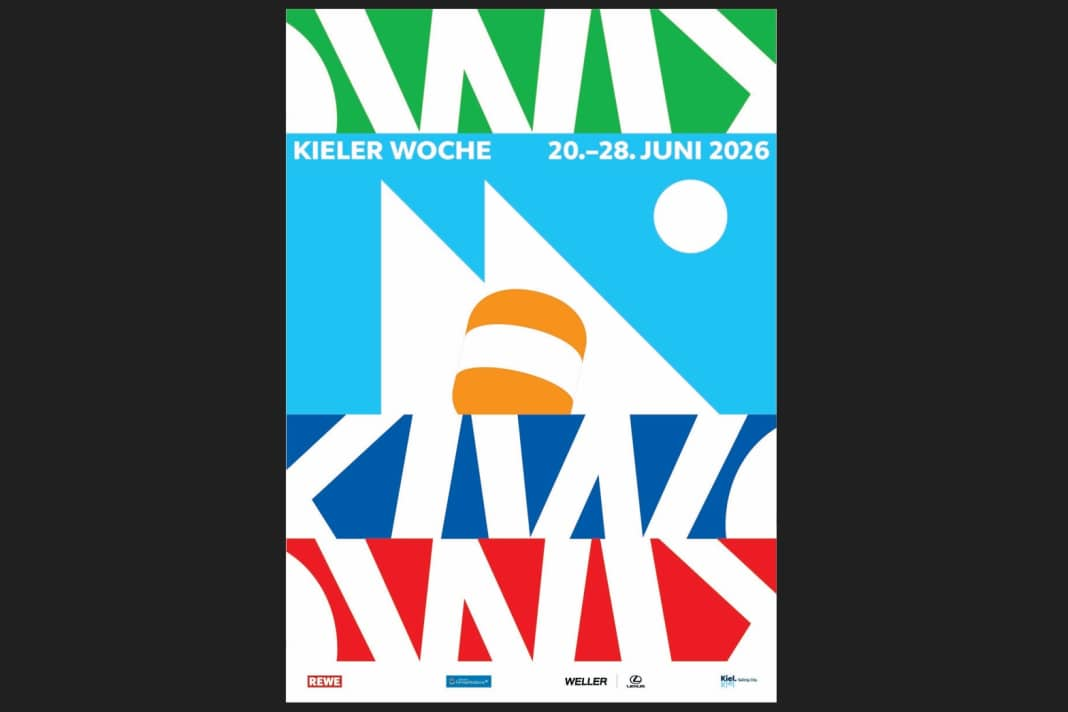





For Kiel Week 2025, it was Bochum-based artist Cihan Tamti whose design won over the jury. This year, Erik Brandt from Minneapolis in the US state of Minnesota beat off competition from Germany and Denmark. If you want to see for yourself: these five designs from Berlin, Hamburg, Stuttgart, Kiel and Copenhagen can be seen here.
However, as the son of a German father, this year's winner also has roots in this country and spent part of his childhood in northern Germany. Erik Brandt has been working as a graphic designer since 1994 and is currently a professor at the Minneapolis College of Art and Design.
The design of Kiel Week 2026
Summery - According to the jury, the colours of Erik Brandt's design played a major role in winning the selection process: "Friendly, relaxed and with a special lightness" is the design, "summery colours convey openness and joie de vivre". Four of the three levels each show the white lettering KIWO in the bleed, each on a different base colour.
However, the visual centrepiece is an orange regatta buoy with sails and the sun behind it. According to the jury, it "strongly symbolises the sport of sailing with the open, festive atmosphere of the summer festival". Even if the designs often choose more or less strongly abstract depictions, the motifs usually have a clearly maritime effect in their design. Erik Brandt's design for Kiel Week 2026 is no exception.
Not just for the poster
In addition to the iconic poster, the Kiel Week design also includes a whole range of other applications and must therefore be truly multifunctional and have a high recognition value. This includes classic merchandise items such as caps, mugs and bags as well as other representative objects such as flags and banners. The design even has to be suitable for painting a car.
The winning design has been selected in a competition since 1959. Other motifs from this period can be found here. In comparison, they not only point to the long history of Kiel Week, but also provide a maritime insight into the design trends of the past decades.
